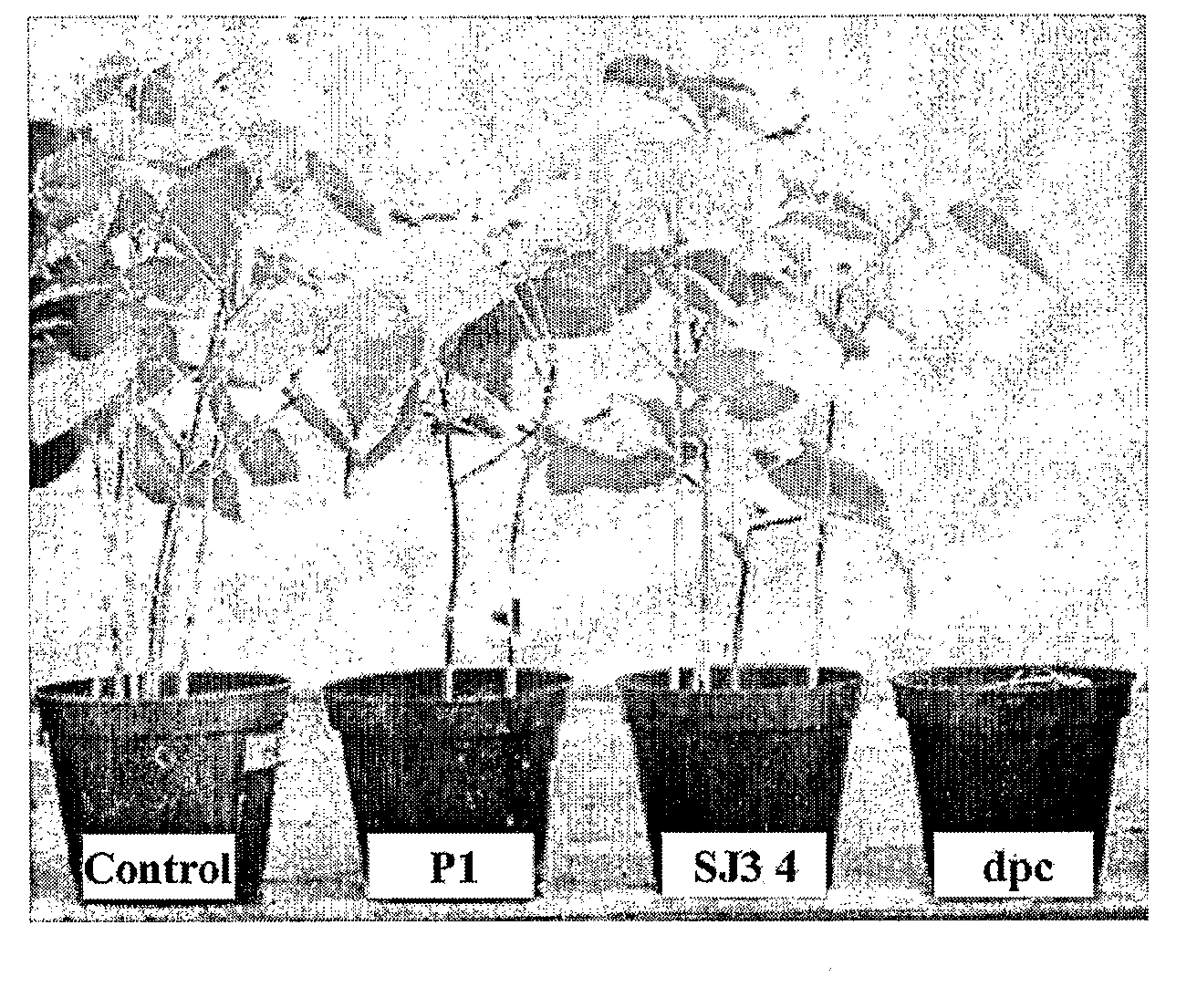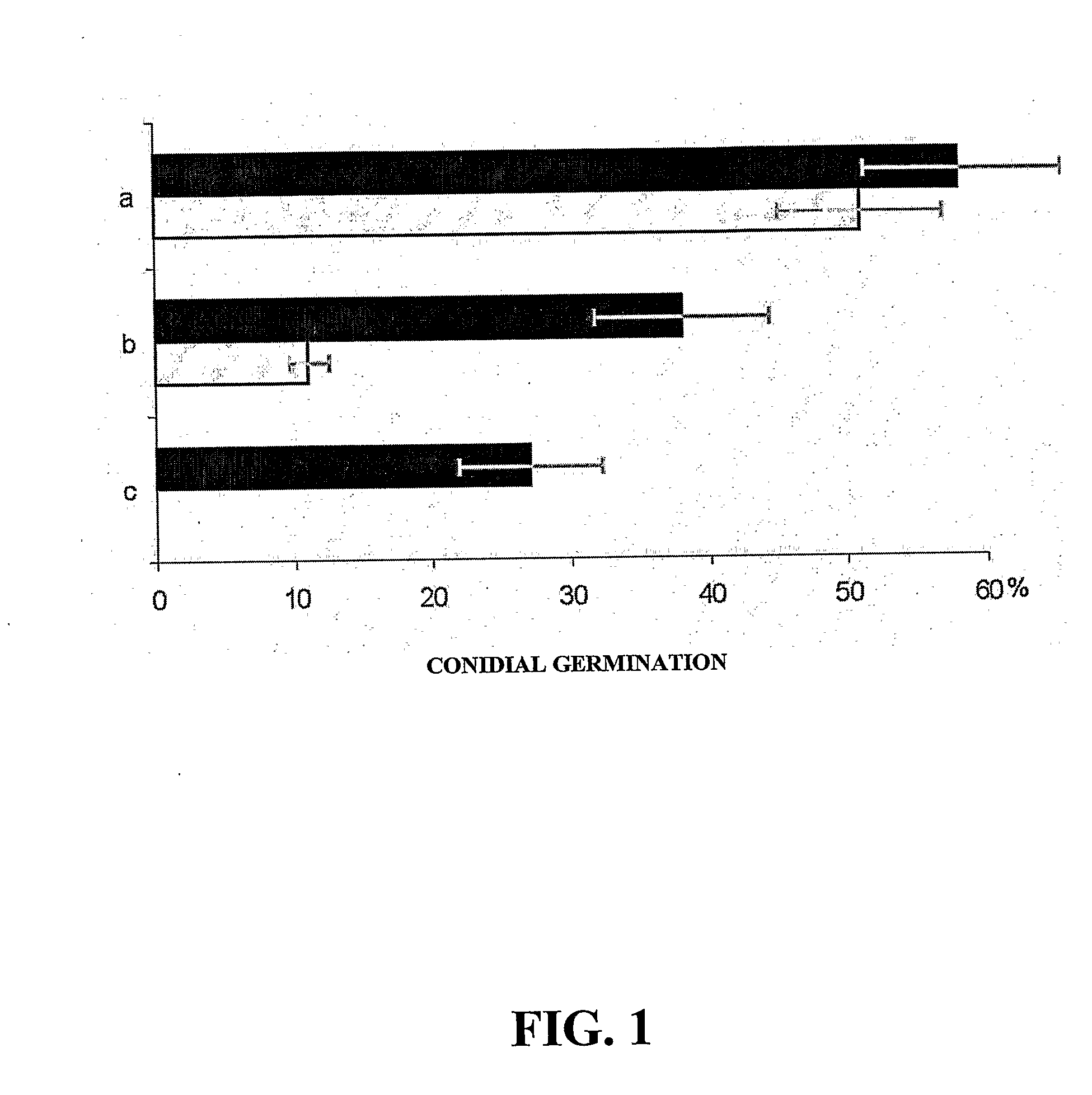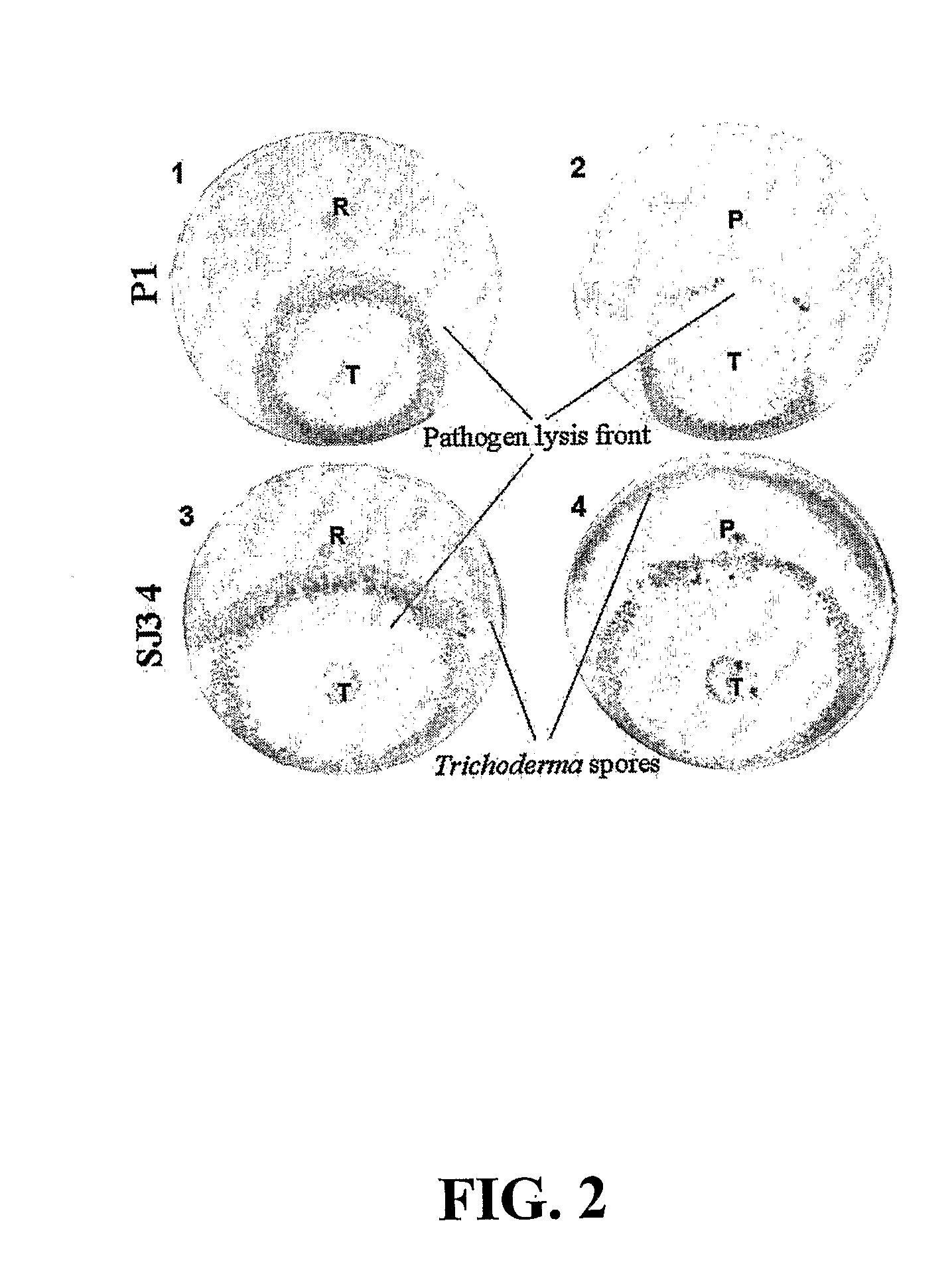Transgenic strains of trichoderma and their use in biocontrol
a technology of trichoderma and biocontrol, applied in the field of transgenic trichoderma spp, can solve the problems of incomplete understanding of the mechanisms of biocontrol, inability to provide the broad spectrum of microbial and fungal disease resistance conferred by trichoderma, and achieve the effects of reducing the risk of microbial and fungal disease, and improving the ability to inhibit disease in plants
- Summary
- Abstract
- Description
- Claims
- Application Information
AI Technical Summary
Benefits of technology
Problems solved by technology
Method used
Image
Examples
example 1
Properties of the Transgenic Strain
[0055]A transgenic form (SJ3 4) of strain P1 (ATCC 74058) of T. atroviride (formerly T. harzianum) was prepared as previously described (Mach et al., “Expression of Two Major Chitinase Genes of Trichoderma atroviride (T. harzianum P1) is Triggered by Different Regulatory Signals,”Appl Environ Microbiol 65:1858-1863 (1999), which is hereby incorporated by reference in its entirety), except that the transgenic Trichoderma of the present invention contains 12-14 copies of a glucose oxidase A (gox) gene obtained (although not identical to) from A. niger, ATCC 9029, having the nucleic acid sequence of SEQ ID NO:1, shown above. This nucleotide sequence encodes a protein having the amino acid sequence of SEQ ID NO:2, shown above.
[0056]The construct used for transformation contains the promoter region from the T. atroviride gene encoding N-acetylhexosaminidase (nag1) fused to the nucleic acid molecule encoding gox. This construct is referred to hereafter a...
example 2
It Vitro Antifungal Abilities
[0062]In vitro B. cinerea spore germination inhibition was tested in ELISA plates essentially as previously described. A suspension of 3×103 Botrytis spores and 50 μl PDB with 5 mM potassium phosphate buffer, pH 6.7, were placed in a well of an ELISA plate and 10 μl of the 20-fold concentrated culture supernatants of strain P1 or SJ3 4 grown on colloidal chitin were added. The addition of 100 mM H2O2 instead of culture filtrates was used as a control. The number of germinated spores was counted after 8 hours of incubation, averaged, and related to the germination percentage of a control treatment containing sterile water instead of culture filtrate, taken as 100 percent gennination. FIG. 1 shows the percentage of conidia (relative to a water control) of B. cinerea conidia that germinated in the presence of culture filtrates from P1 (black bars) or SJ3 4 (gray bars). As also shown in FIG. 1, culture filtrates were obtained by growth in cultures in (a) the...
example 3
In Situ Seedling Protection
[0066]Tests were conducted to compare the ability of SJ3 4 and P1 to protect bean cultivars (Phaseolus vulgaris cv. Borlotto) against two different plant pathogens. For these tests, the bean seeds were coated with a 10% (w / v) suspension of Pelgel (Liphatech, Milwaukee, Wis.) in 20 mM potassium phosphate buffer containing 20 mM glucose. One ml of a 1×108 conidia / ml suspension of Trichoderma was used for coating 10 g of seeds. As a control, the same suspension without Trichoderma was used. Pathogen-infested soil was prepared by inoculating 500 ml of PDB with R. solani mycelium from a 4-day old 8-cm PDA plate. Two g wet weight of the resulting biomass was used to inoculate 1 L of sterile soil. For P. ultimum, 1 liter of sterile soil was infested with four 3 d old 8 cm plates of the pathogen homogenized in a blender for 30 s. After 2 days the infested soil was diluted 1:4 with sterile soil and used for biocontrol assays as described above. The coated seeds wer...
PUM
| Property | Measurement | Unit |
|---|---|---|
| pH | aaaaa | aaaaa |
| distance | aaaaa | aaaaa |
| wet weight | aaaaa | aaaaa |
Abstract
Description
Claims
Application Information
 Login to View More
Login to View More - R&D
- Intellectual Property
- Life Sciences
- Materials
- Tech Scout
- Unparalleled Data Quality
- Higher Quality Content
- 60% Fewer Hallucinations
Browse by: Latest US Patents, China's latest patents, Technical Efficacy Thesaurus, Application Domain, Technology Topic, Popular Technical Reports.
© 2025 PatSnap. All rights reserved.Legal|Privacy policy|Modern Slavery Act Transparency Statement|Sitemap|About US| Contact US: help@patsnap.com



